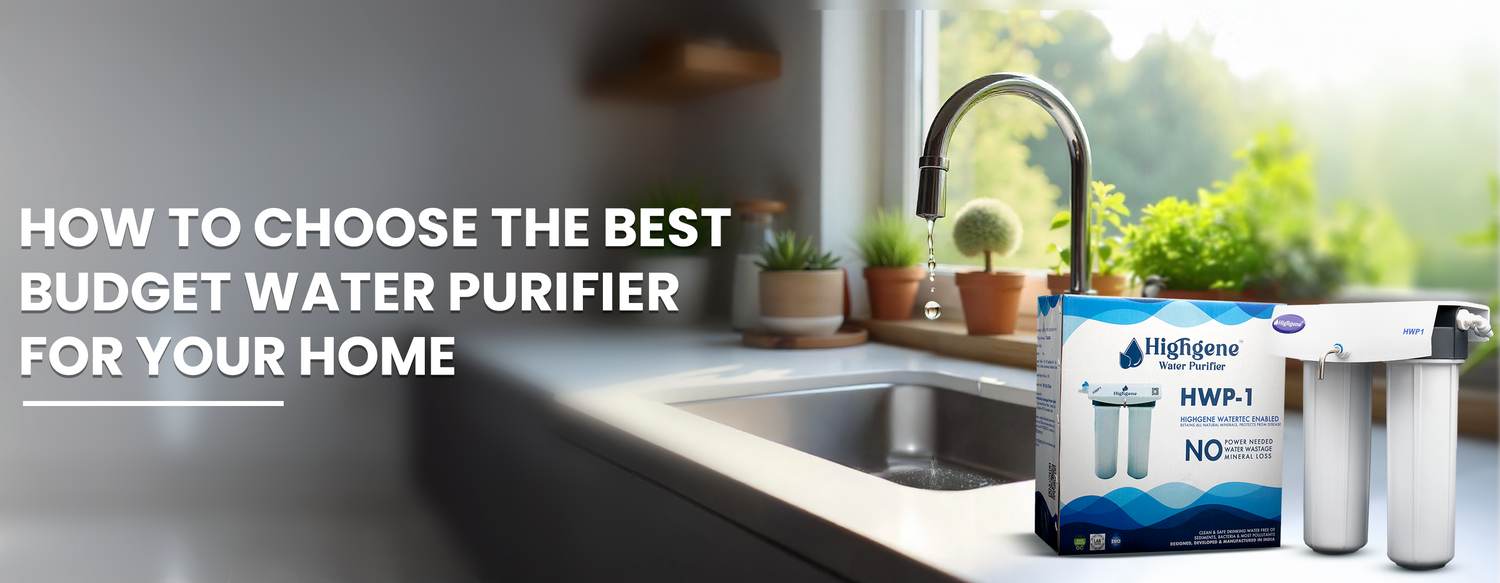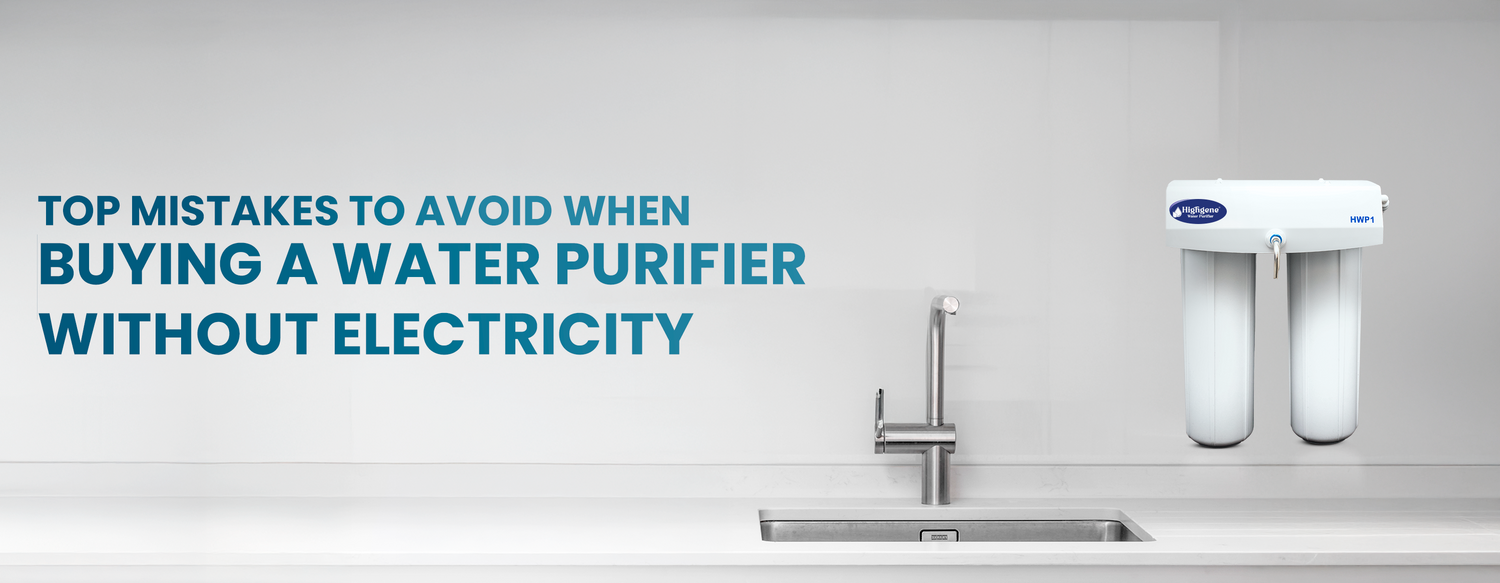Today's aware adults are prioritising their overall health and well-being. Water plays a crucial role in keeping our bodies functioning smoothly and efficiently, and it has become an essential demand for these adults to be free from any kind of contaminants in their drinking water. Day by day, pollution and other environmental factors are decreasing the quality of consumable water. And that's why having a water purifier at home has become a necessity rather than a luxury.
At Highgene, with our 20+ years of experience, we've observed people being completely unaware of their requirements. Due to this, they either abandon the decision to purchase a water purifier altogether or end up buying the wrong one. We believe that before investing money in purification technology, we must ask ourselves: "Will the water purifier I saw in an advertisement or the one being used by one of my acquaintances be suitable for my specific needs?"
In this blog, we've discussed a few points that will help you answer these questions so that you can purchase a purifier that's right for you.
Step 1: Know Your Water
Every household has a different water source - it could be a municipality supply, a borewell, or river/lake water. So, the impurities present in the water vary significantly. Therefore, the first essential step is to understand the quality of water coming into your home, its properties, TDS (Total Dissolved Solids) levels, and contaminants such as heavy metals, bacteria, and viruses.
Knowing the composition of your water is fundamental to selecting an appropriate purification system. Consider getting your water tested by professionals to identify specific concerns that need addressing before making a purchase decision.
Step 2: Consider Your Consumption Capacity
Larger families with more than four members typically have higher water consumption. Therefore, they require a purifier with greater capacity. Flow rate capacity is also an essential aspect of this consideration. If your home's water flow doesn't match the filter's flow rate capacity, the filters may clog quickly, increasing the total cost of ownership.
Additionally, consider peak usage times when multiple family members might need water simultaneously. A purifier that can't keep up with demand during these periods might not be suitable regardless of its other features.
Step 3: Now Understand Purification Technologies
It's important to be aware of the various technologies available in the market and the specific cases where they're most effective. We've listed a few here:
-
RO (Reverse Osmosis):
Usually recommended for high TDS water (>500 PPM). It's ideal for removing dissolved salts and heavy metals. While it effectively eliminates microbes, the wastewater ratio is considerably high.
-
UV (Ultraviolet):
Best for eliminating bacteria and viruses, but doesn't perform well with high TDS water or water containing heavy metals.
-
Gravity-based Sedimentation:
This is one of those non electric water filter technologies that are suitable only for very low TDS levels. The filter used is relatively simple and cannot remove microscopic impurities.
-
Activated Carbon Filters:
These are particularly effective for removing unpleasant tastes, smells, and odours from water.
-
Ultrafiltration (UF):
Suitable for water with TDS levels less than 500 PPM, this technology uses a non-electric water filter that can remove even small microorganisms from water.
Water purifiers available in the market use these technologies either separately or in combination. You should choose the best technology according to your water's TDS levels and impurity types.
Step 4: Evaluate Electricity Requirements
Most purifiers available in the market need electricity to function, which isn't feasible for areas experiencing frequent power outages. Technologies like UV and RO require electricity, making non electric water filter technologies like UF a better choice for such locations.
Energy consumption is another factor worth considering, especially if you're environmentally conscious or looking to minimize utility bills. Some modern purifiers are designed to be energy-efficient while delivering excellent purification performance.
Step 5: Assess the Maintenance Costs
Sometimes a water purifier is marketed as budget-friendly, but later, when customers have to spend money on occasional maintenance, filter cleaning, and replacement, it turns out the purifier wasn't economical at all. In some cases, replacement parts are difficult to find in the market, forcing you to invest a significant amount in buying a new purifier. Before purchasing, make sure you understand how easy the maintenance will be and factor in these long-term costs.
Highgene Water Purifier (HWP -1)
If you're looking for a reliable solution that addresses any of these concerns, Highgene Water Purifier offers a compelling option. Unlike conventional purifiers, it doesn't come with storage capacity. Instead, it filters water on the go, minimizing the risk of recontamination that often occurs in stored filtered water. This purifier uses a non electric water filter and is easy to install even in compact spaces. It employs a 3-stage filtration process where impurities are removed through sedimentation first, then an activated carbon filter removes odor and smell, while the final UF membrane eliminates all types of viruses, bacteria, microorganisms, and even heavy metals.
Suitable for water with TDS levels below 500 PPM, Highgene provides an economical option that makes your water clean and safe by removing 99.999% of impurities while preserving essential minerals your body needs.
Conclusion
Choosing the right water purifier involves understanding your specific water quality, family needs, and budget constraints. By following the steps outlined above, you can make an informed decision that ensures safe drinking water for your family without unnecessary expenditure. Remember that the cheapest option isn't always the most economical in the long run – consider maintenance costs and durability to get true value for your money.





